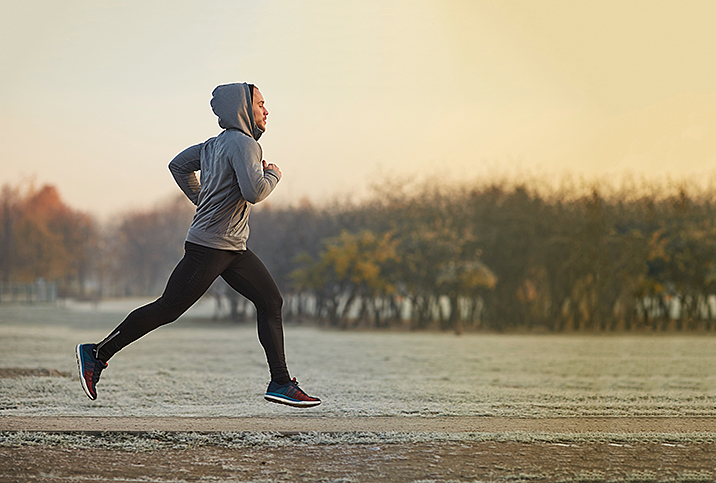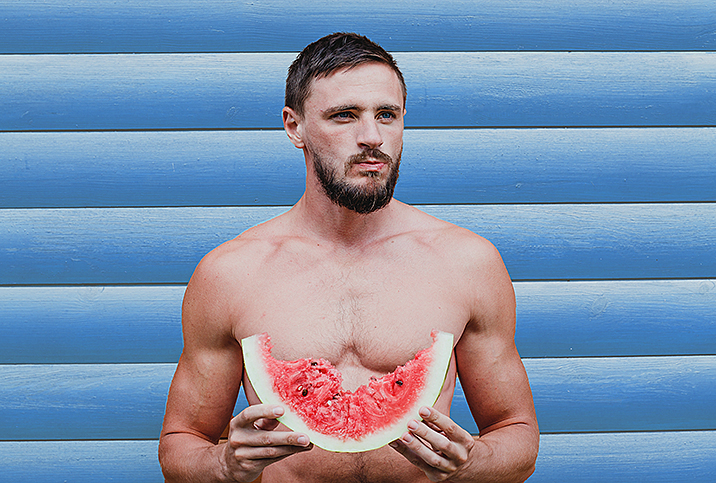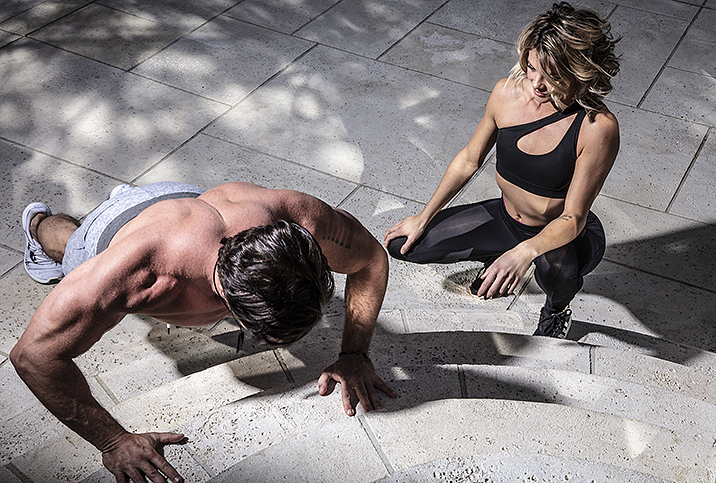Let's Get Physical for Prostate Health

While cancer is obviously one of the biggest concerns related to prostate health, conditions such as prostatitis and benign prostatic hyperplasia (BPH) are also common. However, positive lifestyle choices and decisions can improve the odds against developing cancer and other noncancerous conditions of the prostate gland.
"It's a pretty consistent finding that physical activity is good for reducing the risk of prostate cancer and that it improves recovery from prostate cancer treatment, along with all the long-term outcomes," said Kevin McVary, M.D., a urology professor at Loyola University Medical Center in Chicago.
An active lifestyle can help ease symptoms resulting from inflammation or prostate-related pelvic pain. Exercise in the right capacities can be preventive and beneficial to recovery processes in ways that are specific to the prostate, and contribute to general health.
"It does not have to be Olympian in scale," McVary said, adding that exercise is hypothesized as having anti-inflammatory effects on the body. Since many prostate-specific conditions, including cancer, are inflammatory in nature, this is one of the primary biological relationships between exercise and prostate health.
Benefits of managing body mass index
Barring injury, a physically active lifestyle is almost always beneficial to overall health and well-being. We know the muscles, immune system and cardiovascular system all benefit from regular exercise. But what about the walnut-shaped gland that sits just behind the bladder and contributes to the urinary process, sexual function and more?
The benefits of an active lifestyle on the prostate are indirect but trackable by way of hormone development and circulation, according to Amin Herati, M.D., an assistant professor at the James Buchanan Brady Urological Institute in Baltimore. There is a very high likelihood that an active lifestyle may help reduce the risk of developing noncancerous prostate conditions, added Herati, who is also the director of Male Infertility and Men's Health at Johns Hopkins Hospital.
"The reason for that is the more active somebody is, and the better they control their body mass index (BMI), the more likely they are to maintain a normal testosterone and estrogen balance in their body," Herati said. "The less active they are, the more likely they are to have higher estrogen in their body."
The changes associated with conditions such as BPH and prostate cancer are driven by estrogen as well as testosterone, he explained.
Is all exercise good exercise?
Now that we know the benefits of physical activity on the body and the prostate, exercise aficionados of all stripes can celebrate their well-established habits and look forward to problem-free prostate health in the future, right?
For cyclists, there is a chance your favorite exercise on two wheels might affect your prostate, and avid runners aren't exactly in the clear, either.
To be clear, cycling is an example of the indirect effects of exercise on prostate health. If you've heard cautionary tales about the effect your bike seat has on your backside, it's actually a bit more complicated than it sounds.
The concern with bicycle riding is the pressure it places on the pudendal nerves and pudendal vessels, which supply blood flow to the pelvic area. Studies comparing sexual function in guys who are runners versus guys who are bicyclists show very little difference between the two concerning this pudendal pressure, according to Herati.
"In fact, there's more signal [of pressure] coming from the runners than the bikers," he said.
There is a higher frequency of genitalia numbness among bicycle riders, though, and issues that cause a spasming pelvic floor dysfunction can lead to impingement on the prostate, which Herati referred to as "microischemia," or poor blood flow through the prostate. This impaired blood flow can then become a case of secondary prostatitis.
Pelvic floor exercises are sometimes recommended for men as they get older or when they experience prostate conditions such as BPH. But in a case of secondary prostatitis resulting from pelvic-floor-related microischemia, these exercises might make matters worse.
"I think it would be potentially exacerbating," Herati said. "The reason I say that is the pelvic floor muscles they would be working on, they need to be working on relaxation of those muscles. The typical exercise that people think of are Kegels, and that's the opposite of what they want."
Kegels or no Kegels?
Kegel exercises are often promoted as a potential benefit for sexual performance and erectile dysfunction in men, but Herati thinks they should be used with much more specific goals—not sexual—in mind.
"I'm of the mindset that the only time Kegels should ever be performed is for stress urinary incontinence," he said.
Kegels can actually do more harm than good in relation to the pelvic floor muscles and the prostate, so unless a doctor recommends them—maybe for erectile issues, premature ejaculation or other issues—men shouldn't necessarily incorporate them into a daily workout routine.
Now that we understand the types of common exercises with potential unintended consequences regarding prostate health, what can we do?
How to help your prostate (with exercise)
BMI management is the best guiding metric for an active lifestyle that will help, rather than harm, your prostate. Body mass index is a measure of body fat based on your weight and height. The good news is controlling your weight doesn't always require particularly rigorous or excessive exercise of any kind. In fact, your best bet for prostate-healthy physical activity is most likely the lowest impact exercises.
"The [exercises] that have the most evidence [of effectiveness] are the simpler, more common things, like walking," McVary said. "There's something consistent about movement, which helps us in many ways—cancer prevention and recovery are included in that."
If you're thinking about long-term prostate health and what you can do to improve your chances against prostate cancer or noncancerous conditions, follow this simple advice: Go take a hike and don't bring your bike.


















